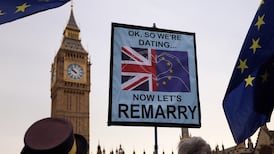Roughly three people die each day in Ireland as a direct result of alcohol use, according to the National Drug-Related Deaths Index. The use of alcohol is self-evidently the cause of alcohol dependence and alcohol-related liver disease. It is also a factor in other health conditions including cardiovascular disease and cancer. Among the many consequences of alcohol-related illness is pressure on already stretched health services.
The news that consumption is at its lowest level for more than 35 years according to the Drinks Industry Group of Ireland, a representative body for manufacturers, distributors and retailers of alcohol, should thus be welcomed.
But there is little room for complacency. The body’s estimate that we each consume the equivalent of 9.96 litres of pure alcohol each year is slightly ahead of the figure of 9.9 litres published by the Health Research Board in May. It is down on the figure of 10.1 litres for 2022 and close to the EU average of 9.8 litres, but some way off the Government target of 9.1 litres per year.
It is still a lot of vodka and when you take into account that around a third of the population don’t drink, the consumption levels of those that do drink must be significantly higher than the average.
READ MORE
The issue of how we drink is also a cause of concern with approximately one-half of those who partake classified as hazardous drinkers (65.7 per cent of males and 36.5 per cent of females). The rate is 64 per cent among young people.
It is clear that our relationship with alcohol is still far from a healthy one although it is getting better. The incidence of hazardous drinking is declining and the number of young people who do not drink is rising.
But these ostensibly positive trends raise their own issues. What is behind them is not clear and may not necessarily be benign if they are associated with reduced socialisation and the use of other drugs. Further research is needed to gain a better understanding of the wider context in which young people’s drinking habits are changing.












